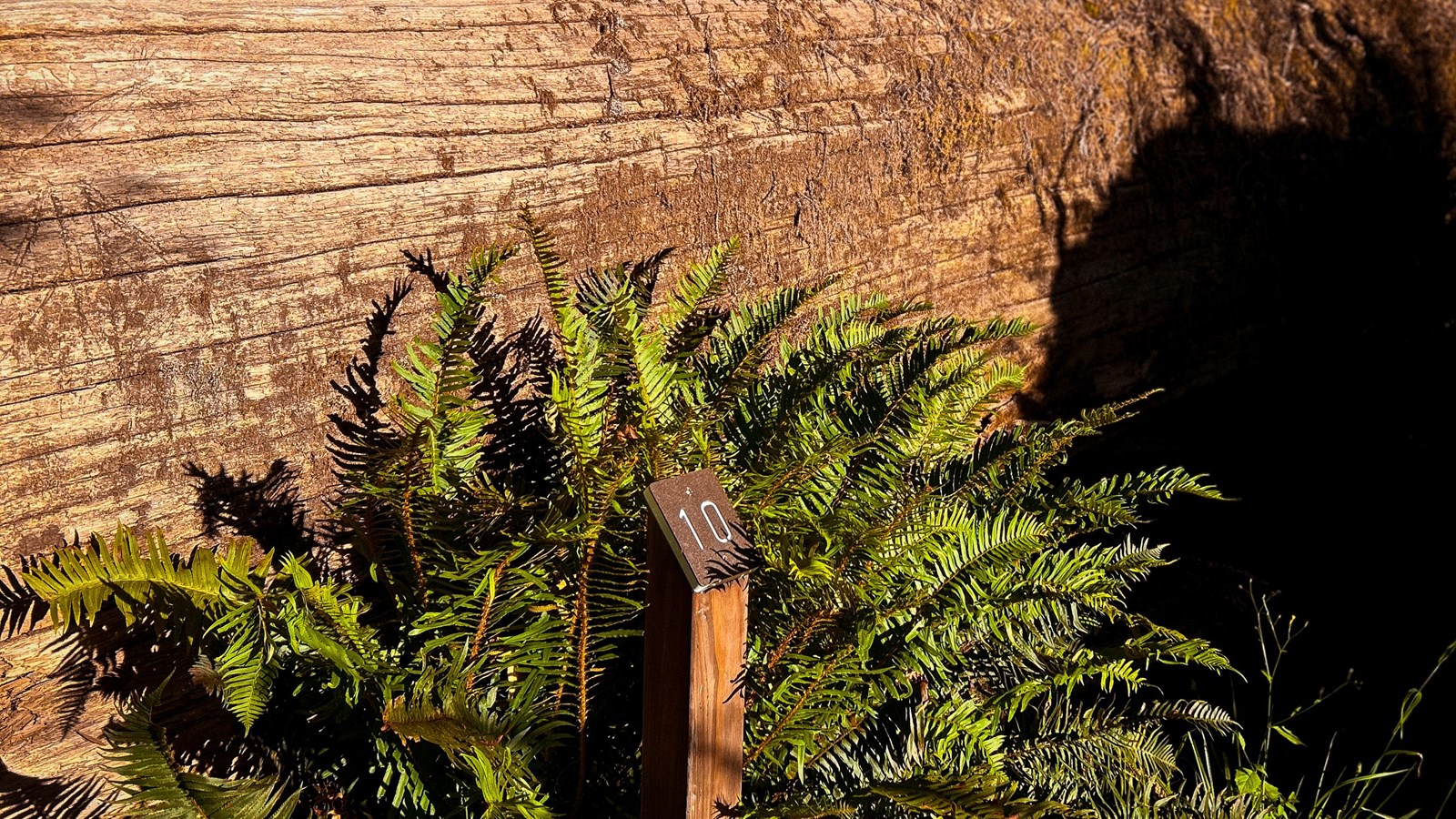Last updated: June 20, 2025
Place
Tall Trees Walking Tour Stop 10

NPS Photo
The Brine Vat
Investigate this fallen, hollow redwood. Do you notice anything strange? The historical abundance of salmon and steelhead trout in Redwood Creek gave one man the idea to turn this fallen redwood into a brine vat for salting fish. In the 1920s, during the Great Depression, this log was hollowed out and lined with cement by Bert Robinson. Every autumn Bert would row eight miles up the creek from the town of Orick equipped with supplies and plenty of salt. He spent the fall and early winter at the grove living in a lean-to or a treehouse modified from a goose-pen. Here he would catch fish, soak them in brine, smoke them, and then, in the spring and summer, sell his bounty to tourists along the old Redwood Highway.
Salmon were once so numerous; scientists now know they were a major source of nutrition for redwoods growing along alluvial flood plain deposits like the one in this grove. After spawning, the fish would die, wash up on shore and decompose. The shallow roots of these trees would absorb these nutrients. Would you believe the nitrogen from salmon DNA has been found inside the wood high up in a redwood canopy?
The last century has not been kind to our salmon species. Overfishing, climate change, and human alterations to their native habitat have decimated their populations. Here along Redwood Creek, clear-cut logging on the slopes above created erosion that choked salmon breeding pools with silt before the park was established. Will the next century showcase their success or their demise?
